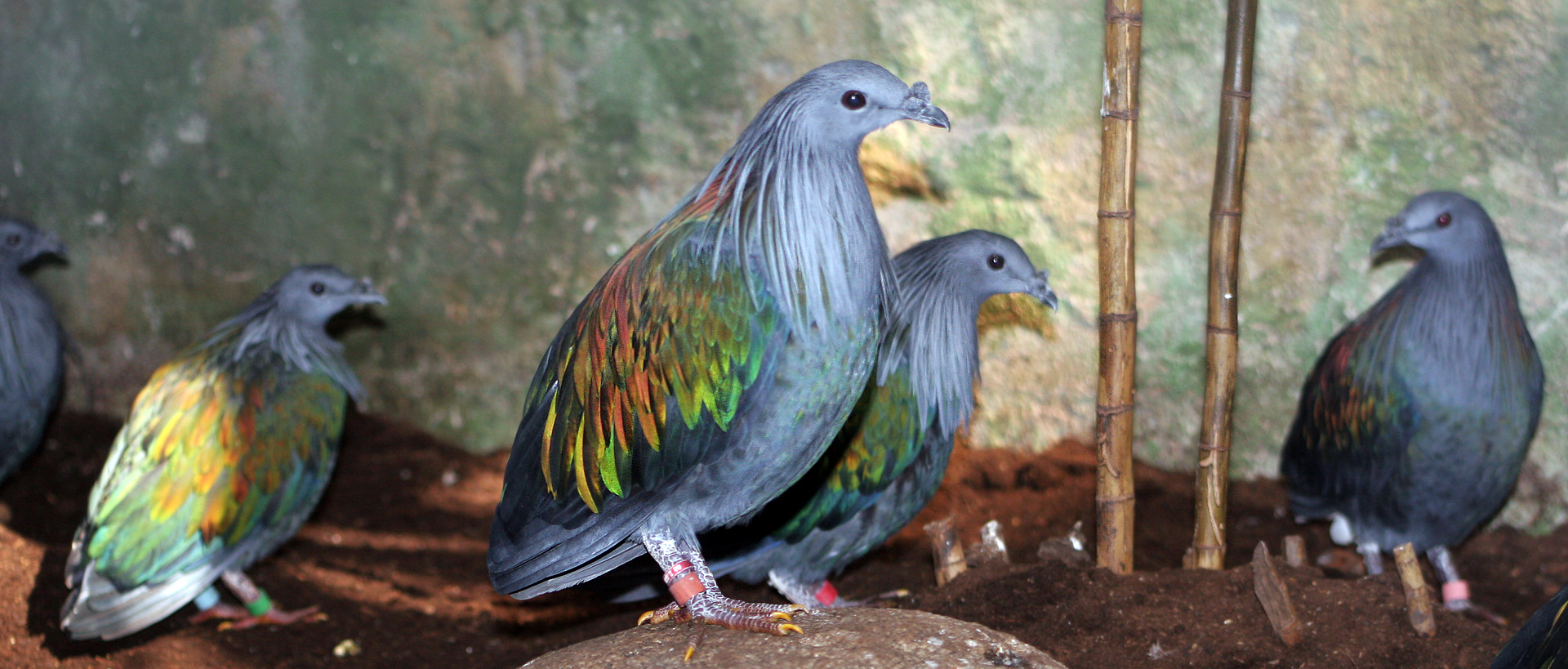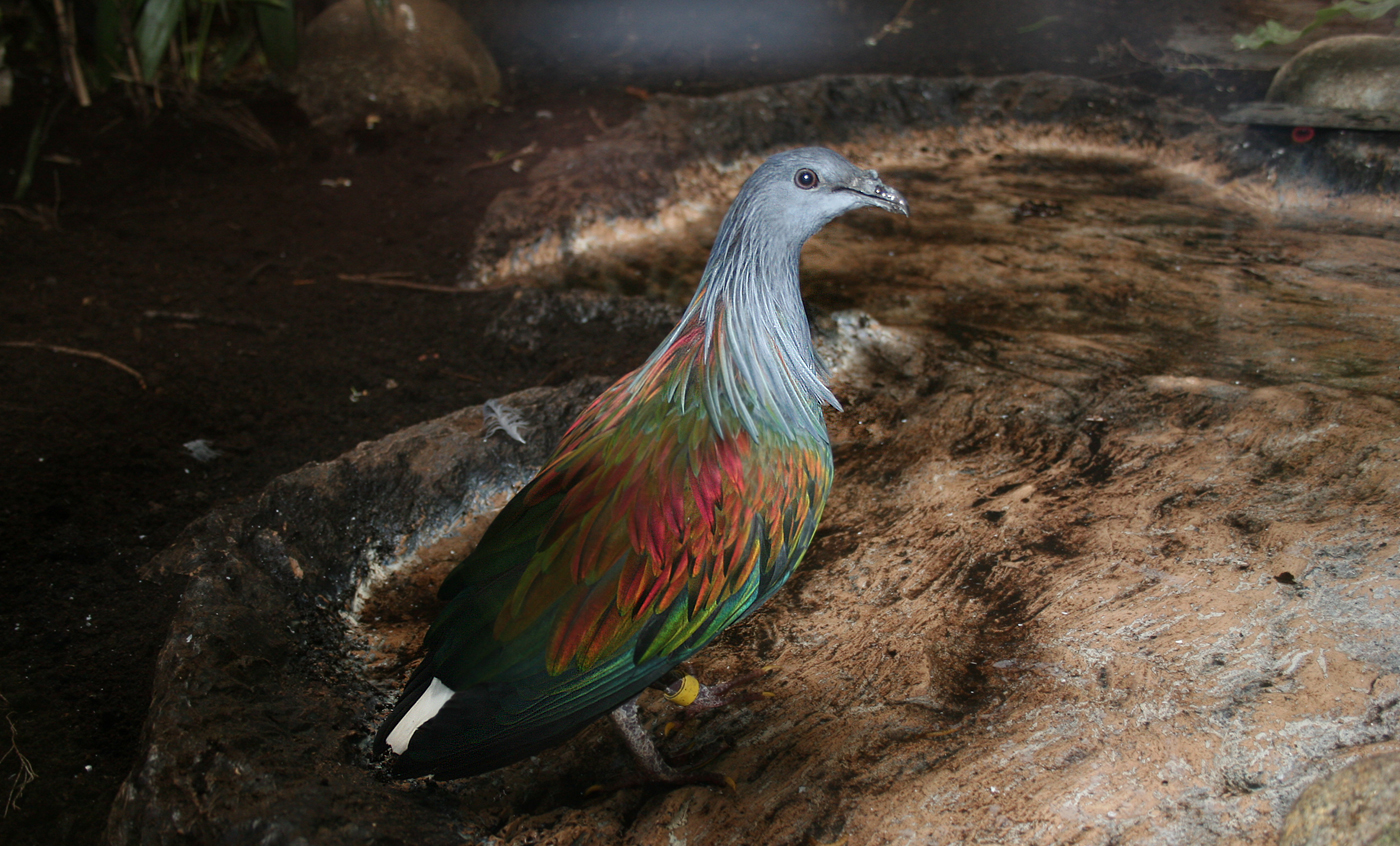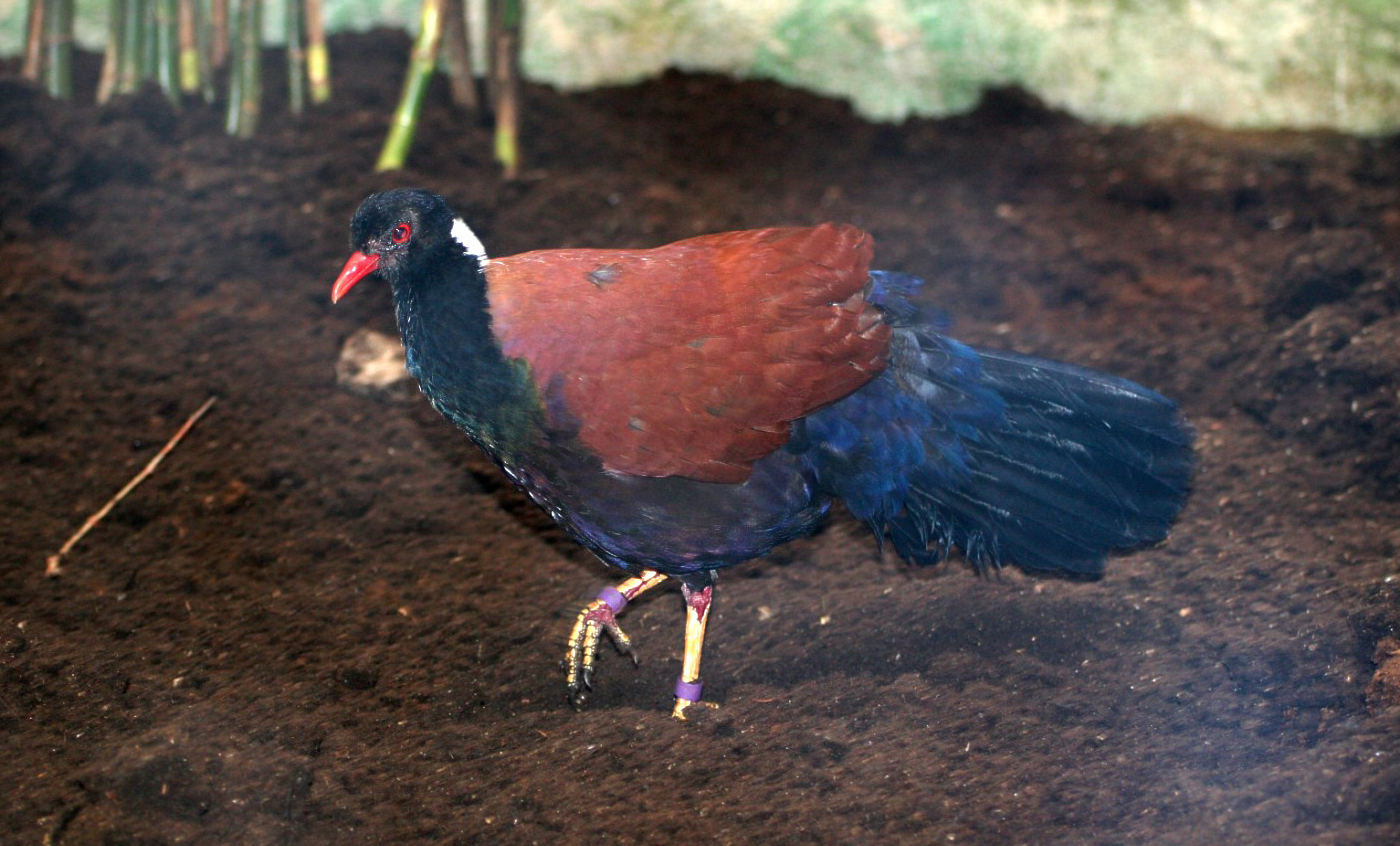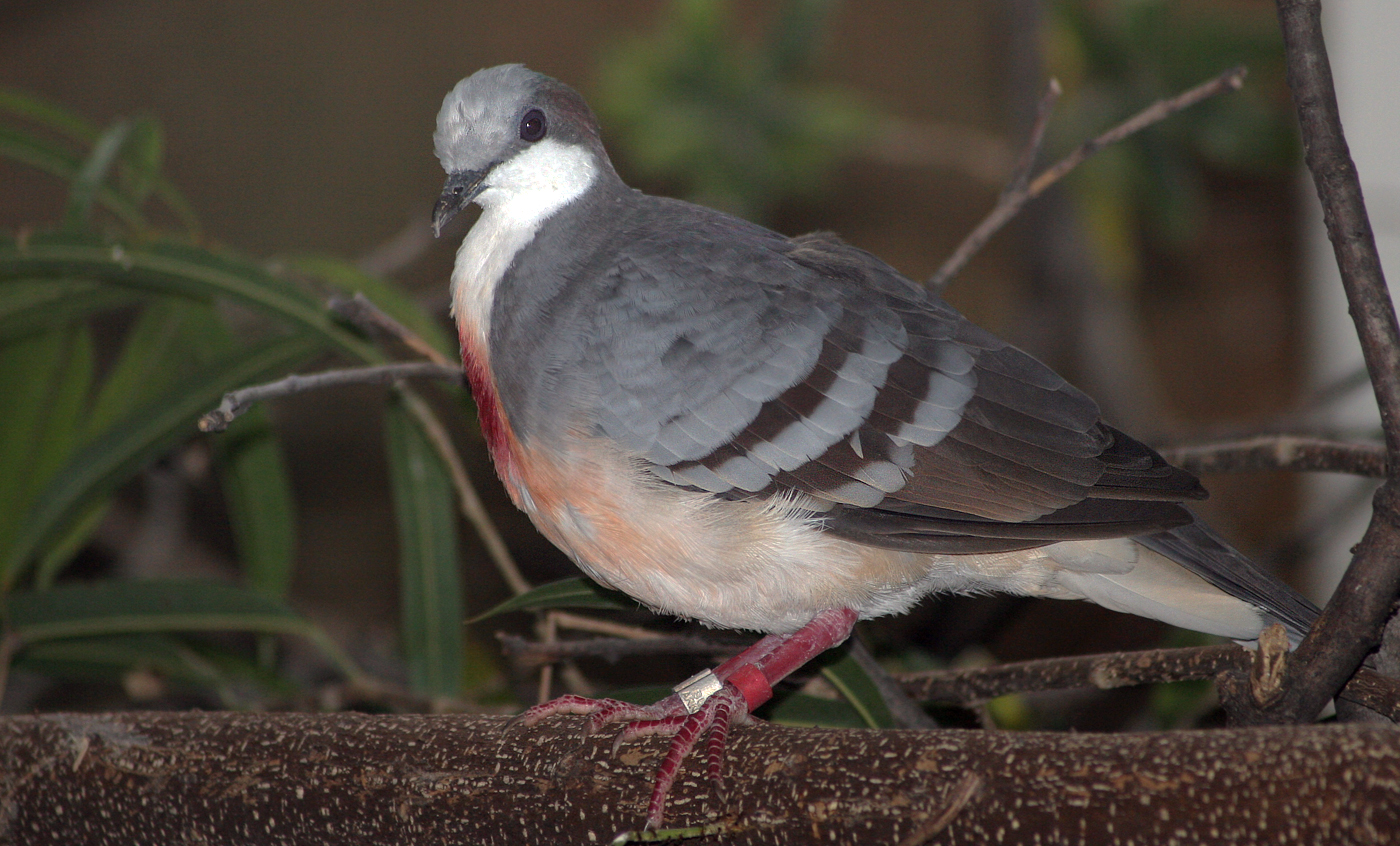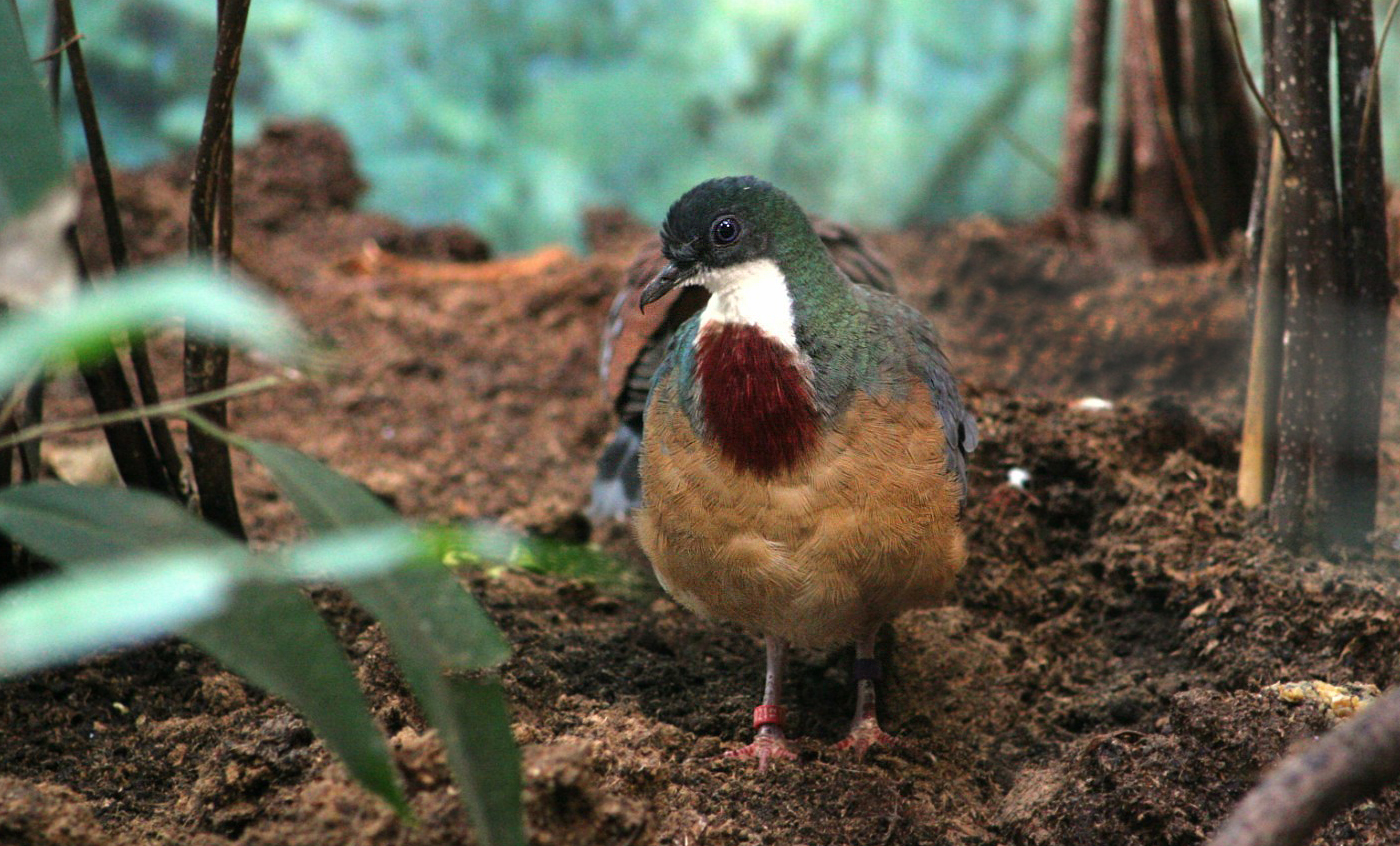Nicobar pigeon
The Nicobar pigeon spends a great deal of time on the ground in the forests and jungles of the Andoman, Nicobar, Sunda, New Guinea and Solomon islands where it lives.
This magnificent bird, with its notable iridescent blue and green plumage, is highly endangered nowadays, due to the continuing deforestation of its habitat.
Natural habit
Malaysia, Indonesia, the Philippines, New Guinea.
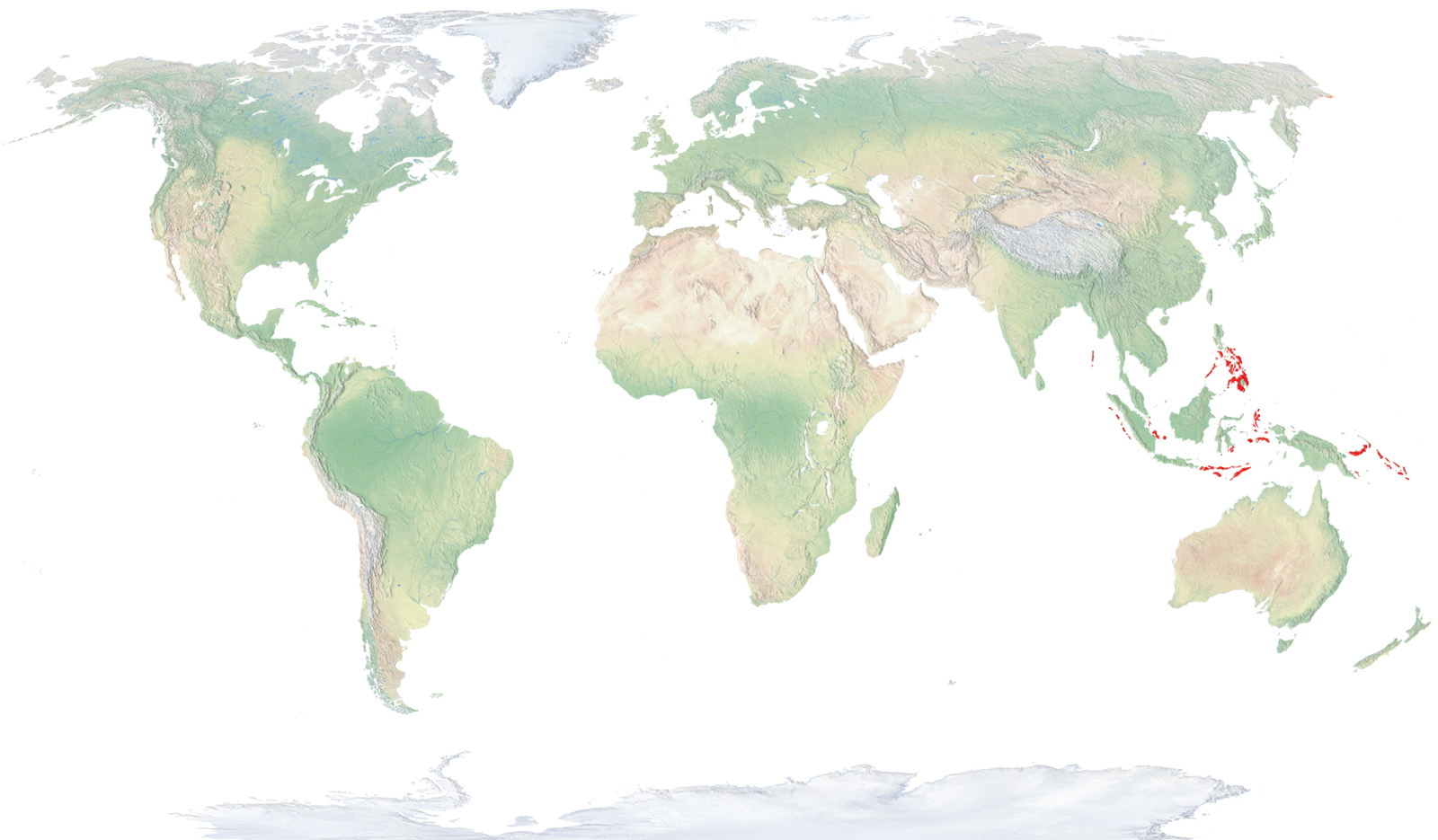
- Distribution / Resident
- Breeding
- Wintering
- Subspecies
Risk level
- Extint
- Extint in the wild
- Critically endangered
- In Danger
- Vulnerable
- Near threatened
- Minor concern
- Insufficient data
- Not evaluated
Taxonomy
Physical characteristics
Biology
Reproduction
Biology
This large pigeon can measure up to 35-cm long and has eye-catching plumage in greens, blues and gold tones, a white tail and long, slender feathers that hang from the neck down to the chest. The dark beak has a noticeable knob.
They inhabit well-conserved mangroves, jungles and forests on a series of islands including Nicobar, Andaman, the Philippines, New Guinea, Palau and Salomon, from sea level up to altitudes of 700 m. In some places, they can adapt to secondary forests and forested regions used by man.
Terrestrial with regard to eating, they feed on fallen fruits, seeds and plant matter that they find on the rainforest floor, normally alone or in pairs. They are most active in the early morning and at twilight.
They breed in colonies, normally on small islands, which can be made up of 100s of couples when there is no human presence. The nest is a simple structure of twigs, built in the branches of trees, in which they deposit a single white egg, which both of the pair incubate.
With nomadic behaviour, they frequently move between islands depending on the availability of food, often forming flocks of some 50 specimens.
In recent decades, their populations have been shrinking considerably in many parts of their area of distribution due to the deforestation of their jungle habitat, hunting for human consumption or to sell as songbirds and becoming prey for mammals introduced on many of the islands that the species inhabits.
An important colony of this endangered pigeon regularly reproduce at the Barcelona Zoo.



